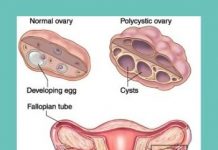Studies Show More Epidurals in Hospitals May Not Lead to More Cesareans
A recent study in Italy looked at the epidural rate over a three year period from 2014-2. Results showed that the epidural rate in the eight largest hospitals increased from 18% in 2012, 22% in 2013 and 24.9% in 2014. The epidural rate also increased significantly in smaller hospitals. Yet researchers found that cesarean rate remained the same.
Another large Swedish study showed in that birth settings where the epidural rate was lowest (20-29%) versus the settings where the epidural rate was highest (60-64%), the rate of cesarean among first-time mothers was consistent at 9%.
Research Indicates that Epidurals May Lead to More Cesareans
On the other side of the fence, other studies seem to indicate that epidurals may in fact, increase the mother’s chance of a cesarean.
A Mexico study from 2014 looked at epidurals and how they may change the mother’s labor. Like many studies, results showed that epidurals did lengthen labor and increase the chance of pitocin. Researchers did find that an increase in the use of epidurals was “associated with a greater risk of instrumental and cesarean deliveries” but admitted that it was difficult to evaluate the real influence of epidurals on labor.
Does the Timing of Epidurals Affect the Cesarean Rate?
Perhaps one issue that has not been as well-researched and may play a role in increasing the cesarean rate is the issue of the timing of the epidural. One study found that the baby’s station (where the baby’s head is in relation to the mother’s pelvis) at the time the epidural was administered made a difference in the cesarean rate.
If the baby’s pelvic station was a -1 or higher when the epidural was administered, the mother’s chance of cesarean was 33%. Whereas if the baby’s pelvic station was at least a 0, the mother’s chance of cesarean was 11%. So getting an epidural when the baby’s head is still high might triple the mother’s chance of cesarean.
What if Research on Epidurals Causing Cesareans is Flawed?
One of the problems in reading research is that one or more flaws in the way the study was conducted can skew results. For example, one flaw in much of the existing epidural research is that groups of mothers who used epidurals are not always compared against no-epidural groups of mothers. Adding a “no-epidural” group to these studies might shed light on whether or not there is even the slightest difference in increasing the mother’s chance of cesarean when using an epidural versus not using one.
Parent-consumers can easily see an example of this on one study conducted a few years ago at the University of California. A meta-analysis was performed, including eight studies that examined both a group of mothers who used epidurals versus those who did not. Interesting that their results found that mothers who used an epidural had a cesarean rate that was ten percentage points higher than the no-epidural group.
Reading Research and Planning Birth
As a part of planning the birth experience, be sure to talk to a health care provider, childbirth educator or birth doula when questions arise. It can be hard to digest research or even be able to decipher if it is flawed. The more informed mothers are about the evidence surrounding pregnancy and birth, the better equipped they will be to make decisions about the use of pain medications for labor.











